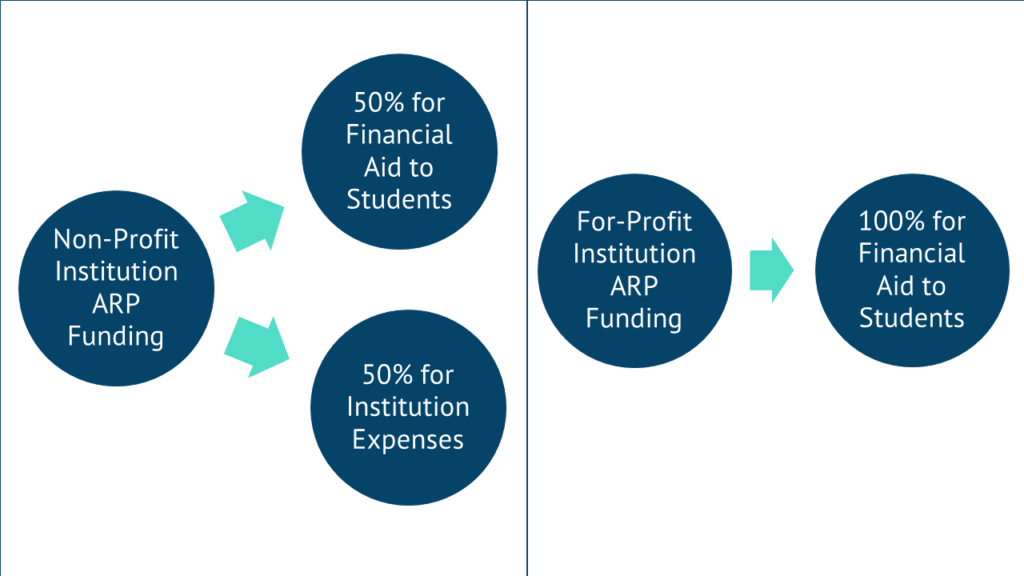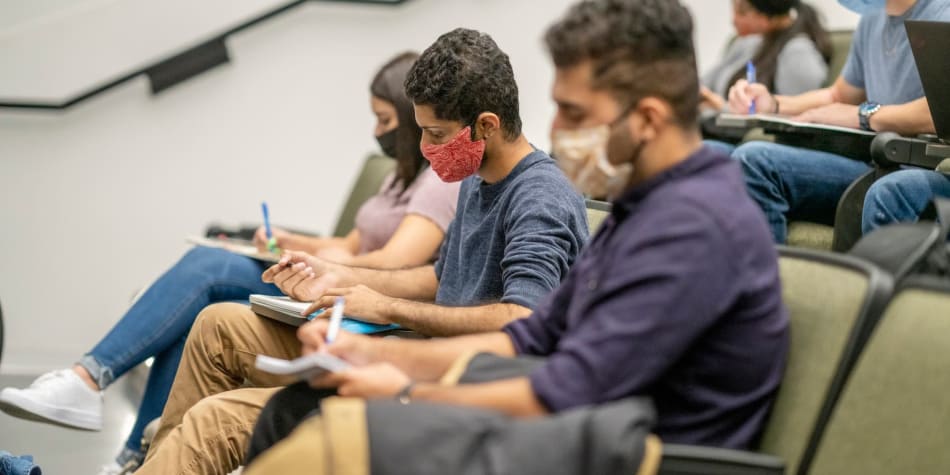Long before the start of the pandemic, the higher education sector was under pressure on multiple fronts. Shifting demographics resulting in a decline in the traditional college-age population, overspending on new facilities, and a lack of clarity of mission had put many institutions in economic peril. The pandemic only served to accelerate these trends and introduce rapid – and likely permanent – changes such as remote learning and new emphasis on student, staff and faculty health and safety.
The higher education sector is now the recipient of a third round of federal funding. The American Rescue Plan (ARP) passed in March 2021 and has significant implications for colleges and universities. Similar to the first two allocations, the ARP designates funds to directly support the financial needs of students, with specific funds designated to Historically Black Colleges and Universities (HBCUs) as well as institutions serving indigenous populations.
Much like the two prior allocations, the Coronavirus Response and Relief Supplemental Appropriations Act (CRRSAA) and Coronavirus Aid, Relief, and Economic Security Act (CARES) Act funding, the new funding allocation of nearly $40 billion is meant to address the financial needs both of students and institutions resulting from the COVID-19 pandemic.
ARP funding requires that 50% must be used for financial aid to students (100% if it is a for-profit institution) and 50% to meet institutional expenditures related to the pandemic, including lost income.

In addition to the criteria used with earlier funding, the ARP includes the following institutional requirement: implement evidence-based practices to monitor and suppress coronavirus in accordance with public health guidelines. For non-profit institutions, there is an approved range of uses for the 50% institutional fund allocation expenditure.

- Purchase of Technology, such as ventilation upgrades and to operate COVID testing programs.
- Purchase of Technology, related to remove learning.
- Creation of areas used to quarantine or isolate students.
- Purchase or lease of temporary classroom trailers.
- COVID-19 expanded genomic sequencing: $1.8B HHS funding for the construction and renovation of lab facilities.
- COVID-19 related research and development: $0.6B.
Non-profit higher education has range to use the funds in the way that feels best for individual institutional needs. While there is no ‘one size fits all’ way of using the allocations, below are insights from research into best practices for higher education to leverage these funds for recovery [1].
Key considerations for the utilization of ARP funds in higher education include:
- When evaluating proposed spending, structure your analysis with experts in multiple areas, such as energy, healthcare, planning, financial auditing, transportation and estimating/ scheduling.
- While some funds are available until expended, many have tight deadlines for submissions. If an institution has submitted an application under Higher Education Emergency Relief Fund (HEERF) I or II they do not need to resubmit.
- Look to leverage funds to work in tandem with community funded projects. As an example, funding for infrastructure (such as transportation serving a campus) might permit low-income students to have improved campus access.
- Track funding. Institutional systems are often not flexible and fund allocations will need to be auditable.
- Develop an overall strategic plan and put in place the standards for governance and decision making at the earliest stage.
- K-12 school programs sometimes overlap with colleges and universities. Take a holistic view of all funding requests to maximize opportunity.
Reference: ARP funding by institution:
[1] https://www.acenet.edu/Policy-Advocacy/Pages/HEA-ED/ARP-Higher-Education-Relief-Fund.aspx
